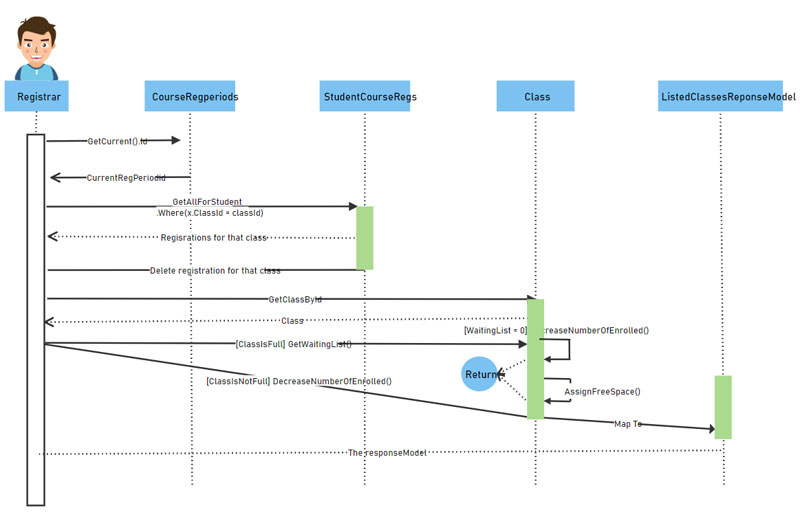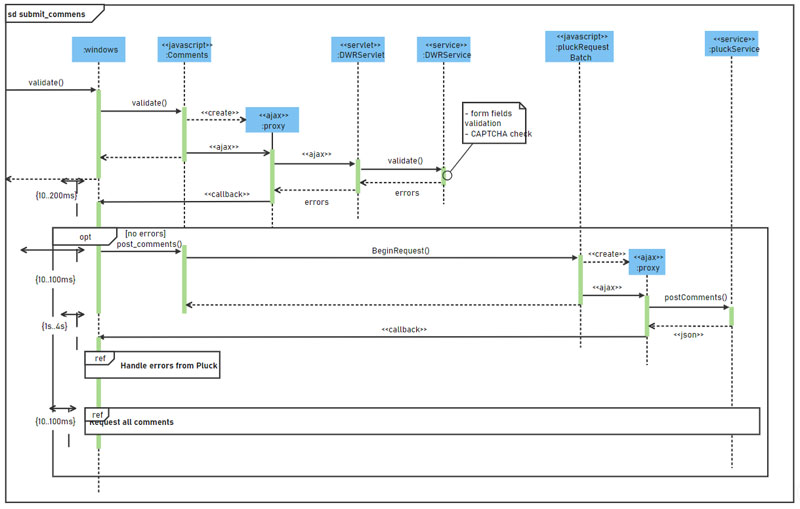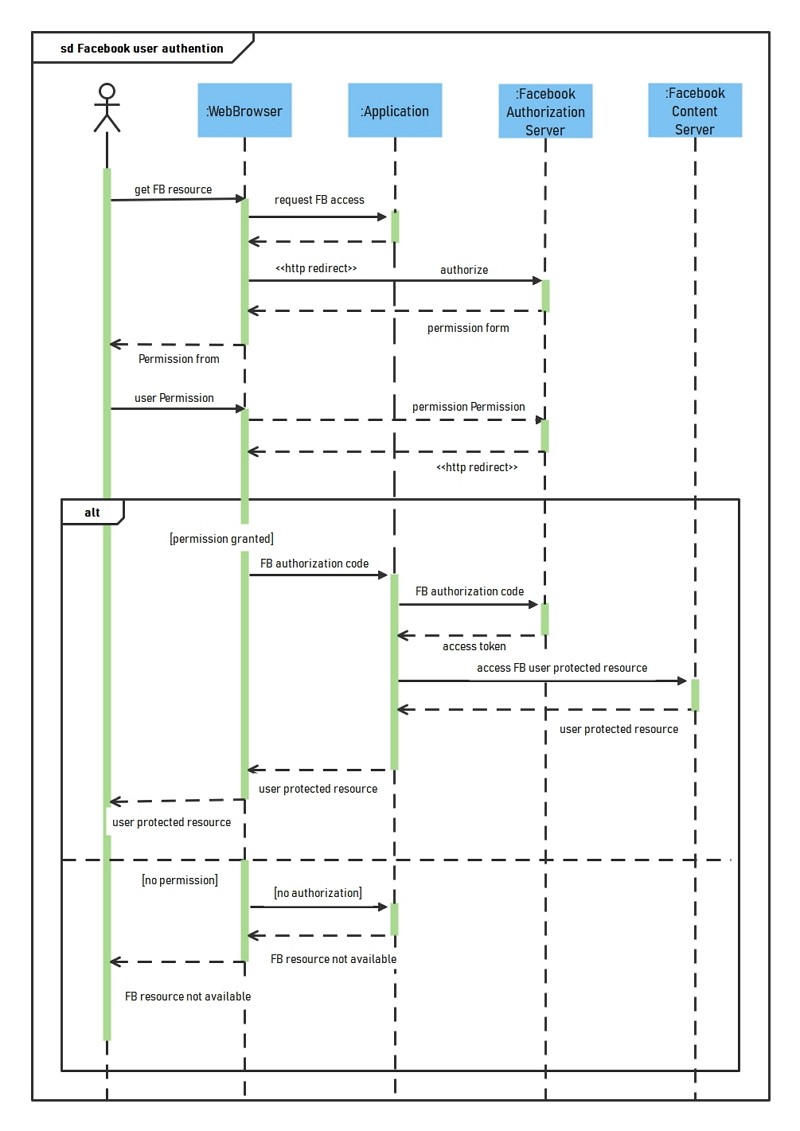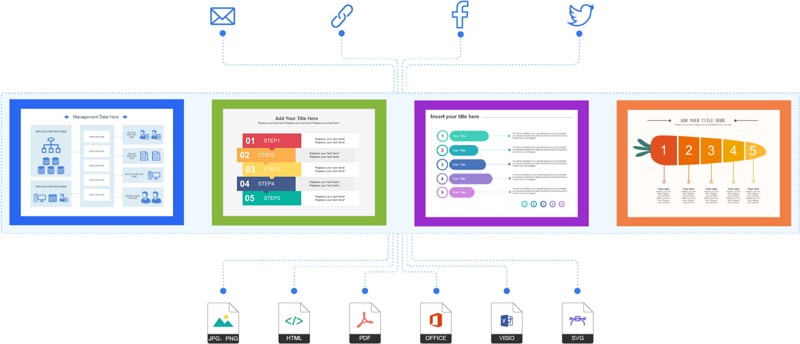Free Editable Sequence Diagram Examples
If you are looking for the UML sequence diagram examples, then you are in the right place. We provide substantial sequence diagram examples for you, you can use them immediately, or just take them as reference. EdrawMax Online is an easier tool for making sequence diagram, just by choosing a built-in template, and keep customizing as your preference.
1. What is The Sequence Diagram?
A sequence diagram is used to model all the possible interactions between objects in a single-use case. They show how the different interconnected parts of a system interact with each other to achieve its set intended goal by carrying out a certain function. Furthermore, when a particular use case is executed, a sequence diagram helps show the order in which the interactions occur.
In layman’s language, it is used to show the interactions between various objects of a particular system or a scenario and the sequential order in which they occur. It shows the many different parts of the system working in harmony and a particular order to achieve a central objective. The best way to understand it is through sequence diagram examples. Also, these examples can be used immediately.
2. Sequence Diagram Examples
Example 1: Transaction System Sequence Diagram
 Source:EdrawMax
Source:EdrawMax
In more than half of the instances of using the sequence diagram, IT developers will more times than not be using them. They use it to illustrate how the different parts of a system will interact with each other and sequential order to achieve a desirable outcome.
A case in point to help you visualize and fully grasp the UML sequence diagram is as follows. An asynchronous message passed between the customer, login screen, and security management is employed when the message dialer does not wait for the receiver to process the message and make a response before sending other messages to other already defined objects within the proposed system. The arrowhead used to show this type of message is a simple line arrow with a dark-colored tip, as shown in the diagram above.
Example 2: Registration Process Sequence Diagram
 Source:EdrawMax
Source:EdrawMax
The functionality of the entire system is influenced by the sequence of messages exchanged amongst its objects. But before that, objects and classes will be displayed in a registration process system. Above is an example of a UML sequence diagram that shows the process of registration.
Example 3: Login Student System Sequence Diagram
 Source:EdrawMax
Source:EdrawMax
A better example to illustrate the UML diagram is by showing students' login to the school system. See the sequence diagram above. When a student logs in into the system, their identity is identified by the system admin, and they get validated on account of the correct credentials. The student is then allowed to access the information he/she requires for a case, for instance: class list, grades, and after that, their mission gets accomplished, and he/she has successfully done what he/she intended to do.
Example 4: Website UML Sequence Diagram
 Source:EdrawMax
Source:EdrawMax
Submission of comments in UML sequence diagram. - Comments written and submitted by the users are initially validated by the website hosting service. To check and ascertain no errors, user comments in the HTML have to be converted into Java objects and probable authentication faults, then back into JavaScript callbacks. These actions are executed by the DWR technology (AJAX for Java).
Comments that are cleared and meet the set criterion are submitted to the Pluck server, hosting all articles' comments. AJAX technology is also employed in this case to submit the new comms to get back the list of amendments (including the new one) without having to load the entire page. JSON is used to get and load the comments back. This diagram also shows some durational constraints. The UML sequence example diagram above shows its several processes as well as how readers' comments are submitted to Pluck.
Example 5: Web User UML Sequence Diagram
 Source:EdrawMax
Source:EdrawMax
This site uses the already made shapes and symbols to create its UML sequence diagrams. But keep in mind that a UML sequence diagram usually documents all the dynamics in an object-oriented system. With it, you save a significant amount of time thanks to its automatically “glueable” activate symbol. Besides saving time, it also provides a smart and seamlessly fitted symbol on the object timeline.
3. Online Sequence Diagram Maker
UML, which stands for Unified Modeling Language, is one of the most popular ways of providing an in-depth visual representation for software development and engineering. The sequence diagram is one kind of language in UMLs. EdrawMax Online is a quick-start sequence diagram maker, which enables you to create diagrams in minutes. Except the sequence diagram, it supports to make over 280 types of diagrams, and with substantial tempaltes, making deployment diagrams could be easier. Apart from this, EdrawMax Online allows to import and export different file formats like Visio, Pdf, Word, Excel, and other such file formats.
EdrawMax Online not just an online UML maker. Use EdrawMax online to create your sequence diagram without efforts, just grab a sequence diagram template or choose one sequence diagram template from EdrawMax Template Gallery and keep customization as your preference, and your sequence diagram is ready.

Why Choose EdrawMax Online
- Create over 280 diagram types
- Supports team collaboration
- Personal cloud & data protection
- Print, share and download
- Powerful template community
4. Key Takeaways
In this article, it illustrates what is a sequence diagram, and site multiple sequence diagram examples to deepen your understanding. This article starts from sequence diagrams all the way through to UML diagram, and sample examples of sequence diagrams were also shown with a piece of additional information on their applications and uses.
Also, if you are looking for the tool to create your sequence diagrams, EdrawMax Online must be your first choice. It is the easiest UML diagram maker, and it comes with many professionally-made templates that you can use for free. However, you may want to a more detailed instruction to help you create diagrams, please check this UML diagram guide for your reference.




